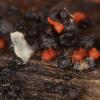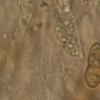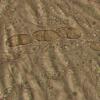
08-01-2026 21:22
 Blasco Rafael
Blasco Rafael
Hola, He recogido esta muestra de Orbilia sobre Re

07-01-2026 10:24
 Danny Newman
Danny Newman
Pezicula sp. on indet. hardwood Appalachian Highl

07-01-2026 22:22
 Danny Newman
Danny Newman
Tatraea sp. on indet. hardwood The Swag, Great Sm

07-01-2026 17:29
 Marc Detollenaere
Marc Detollenaere
Dear Forum,On a barkless Populus I found some smal

10-11-2021 17:33
 Riet van Oosten
Riet van Oosten
Add-on topic http://www.ascofrance.com/forum/7059

07-01-2026 10:05
 Danny Newman
Danny Newman
cf. Chaetospermum on XylariaCosby Campground, Grea

02-01-2026 17:43
MARICEL PATINOHi there, although I couldn't see the fruitbody, I

04-01-2026 17:45
 Stephen Martin Mifsud
Stephen Martin Mifsud
I was happy to find these orange asmocyetes which
 Hello, a few days ago I have collected a Macroconia growing on Leptosphaeria doliolum (both of them growing on old Urtica).
Hello, a few days ago I have collected a Macroconia growing on Leptosphaeria doliolum (both of them growing on old Urtica). Ascospores in this collection measure (15.6) 16.2 - 19.9 (20.5) × (5.8) 6 - 7.2 (7.4) µm, Q = (2.3) 2.33 - 3.1 (3.4). Me = 17.9 × 6.7 µm; Qe = 2.7. They are first hyaline, then brownish, one-septate, very finely punctate. I have measured the width in the thickest part, not in the constriction.
I am not sure whether to determine it as M. leptosphaeriae or M. sphaeriae. Fungi of temperate Europe state these two taxa are perhaps identical, but Grafenhan et al. 2011 distinguish them as two species. They write: "The distinction between Macroconia leptosphaeriae and
M. sphaeriae is based on the size of ascospores and conidia in the
type collections. According to Wollenweber (1926), the ascospores
of the type material of M. leptosphaeriae are smaller (14–18 ×
5–5.5 µm) than those of M. sphaeriae (19–25 × 5.8–6.5 µm)."
Unfortunatelly I haven´t encountered any conidia, so I have to rely on ascospores. However, my values are between the values for the two species given by Wollenweber. Maybe this author measured dead ascospores (therefore smaller than my vital ones - then my collection would better fit M. leptosphaeriae)?
Thanks, Zuzana


Thank you very much for your reply. No existence of M. sphaeriae would make it much easier.
Zuzana




